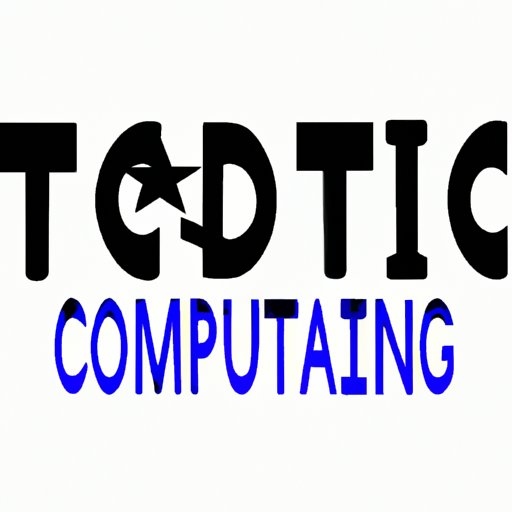Introduction
Using copyrighted music on YouTube is a tricky business. After all, YouTube’s Content ID system is designed to detect when you upload a video that contains copyrighted music, and if it does, it will take down your video or start running ads against it. It’s important to understand the rules around using music on YouTube so that you don’t get into any legal trouble.
The purpose of this article is to provide an overview of the different options available to you when it comes to using copyrighted music on YouTube. We’ll discuss YouTube’s copyright guidelines, different types of music licensing, getting permission from rights holders, using royalty-free music, utilizing Creative Commons licenses, and looking into music libraries and subscription services.
Understand YouTube’s Copyright Guidelines
Before diving into the different options for using copyrighted music on YouTube, it’s important to understand YouTube’s copyright guidelines. YouTube’s content policy states that “you may not upload videos that contain content that you do not own or have the right to use.” This means that if you upload a video with copyrighted music, it could be taken down or muted due to copyright infringement.
In addition to this, YouTube also has a three-strike system for copyright infringement. If you are found to have uploaded a video with copyrighted music, you will receive a warning from YouTube. After three warnings, your account will be terminated.

Research the Music Licensing Options Available
When it comes to using copyrighted music on YouTube, there are a few different options available to you. Depending on the type of music you want to use, you may need to purchase a license from the rights holder in order to legally use their music.
One option is to research the different types of music licenses available. For example, some music labels offer a “synchronization license” which allows you to use a song in a video. Other labels may offer a “mechanical license” which allows you to reproduce a song in a physical format such as a CD or DVD.
Another option is to look into public domain music. Public domain music is music that is no longer protected by copyright law and is free to use. However, it is important to note that some public domain music may still require permission from the original artist or composer before it can be used.

Get Permission from the Rights Holder
If you want to use copyrighted music on YouTube, you will need to get permission from the rights holder. The rights holder is usually the artist, label, or publisher who owns the copyright to the song. You will need to contact them directly to negotiate a music licensing agreement.
When contacting the rights holder, you should explain what your project is and how you plan to use the music. It’s also important to include details about how much money you are willing to pay for the license. Once a licensing agreement has been reached, you will be able to legally use the music in your video.
Use Royalty-Free Music
Royalty-free music is music that is licensed for a one-time fee. This means that once you pay the fee, you can use the music in perpetuity without having to pay any additional royalties. Royalty-free music is often a good option for those who are on a tight budget, as it eliminates the need to negotiate a licensing agreement with the rights holder.
There are a number of websites where you can find royalty-free music, such as AudioJungle, Pond5, and Free Music Archive. These sites offer a variety of music genres, so you should be able to find something that fits your needs.
Utilize Creative Commons Licenses
Creative Commons licenses are a great way to use copyrighted music on YouTube without breaking any copyright laws. Creative Commons licenses allow creators to share their work under certain conditions. For example, some licenses may allow you to use the music in your video as long as you give credit to the original artist.
There are a number of websites where you can find Creative Commons music, such as SoundCloud and Jamendo. Additionally, many popular artists offer their music under Creative Commons licenses, so be sure to check out their websites as well.
Look into Music Libraries and Subscription Services
Music libraries and subscription services are another great option for using copyrighted music on YouTube. Music libraries offer a selection of songs that can be licensed for a one-time fee, while subscription services allow you to access a large library of songs for a monthly or yearly fee.
Popular music libraries and subscription services include Artlist, Epidemic Sound, and Musicbed. These services offer a variety of music genres, so you should be able to find something that fits your needs.
Conclusion
Using copyrighted music on YouTube can be tricky, but with the right knowledge and tools, it can be done legally and safely. In this article, we discussed YouTube’s copyright guidelines, different types of music licensing, getting permission from rights holders, using royalty-free music, utilizing Creative Commons licenses, and looking into music libraries and subscription services.
By understanding the rules and exploring the different options available, you can use copyrighted music on YouTube without running into any legal issues.
Next Steps
Now that you have a better understanding of how to use copyrighted music on YouTube, it’s time to start researching the different options. Take some time to explore the different music licensing options, public domain music, and Creative Commons licenses available. Then, contact the rights holder to negotiate a music licensing agreement or purchase royalty-free music from a library or subscription service.
(Note: Is this article not meeting your expectations? Do you have knowledge or insights to share? Unlock new opportunities and expand your reach by joining our authors team. Click Registration to join us and share your expertise with our readers.)
